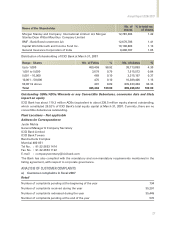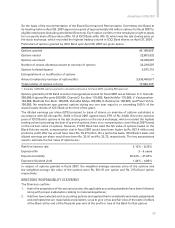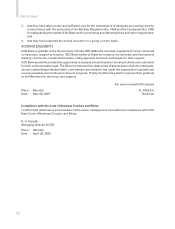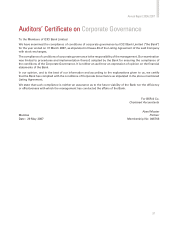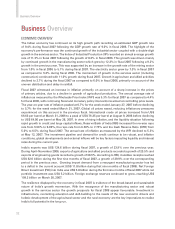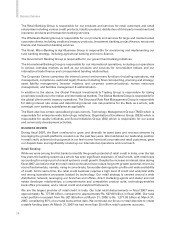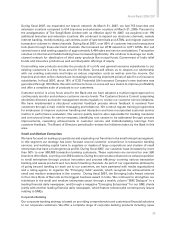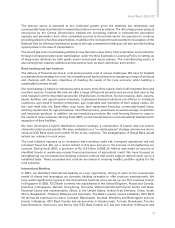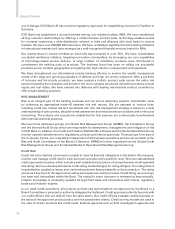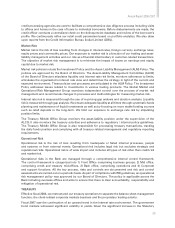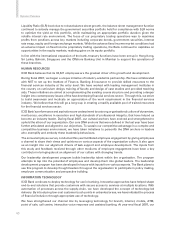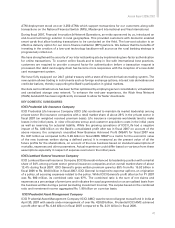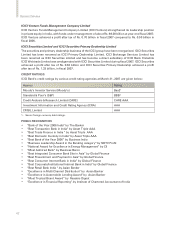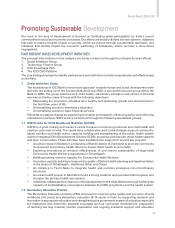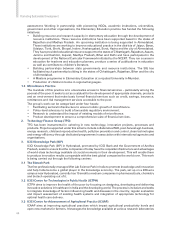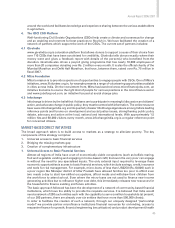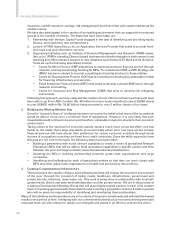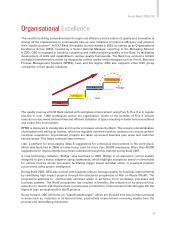ICICI Bank 2007 Annual Report Download - page 39
Download and view the complete annual report
Please find page 39 of the 2007 ICICI Bank annual report below. You can navigate through the pages in the report by either clicking on the pages listed below, or by using the keyword search tool below to find specific information within the annual report.
37
Annual Report 2006-2007
The telecom sector is expected to see continued growth given the relatively low teledensity and
consequently large investments in networks by telecom service providers. The ultra mega power projects
announced by the Central Government, besides the increasing interest in hydroelectric generation
capacity and generation from other renewable sources in the private sector are expected to continue
providing attractive funding opportunities. In addition the increased thrust towards the foundation of the
National Grid by offering transmission projects through competitive bidding would also provide funding
opportunities in the area of transmission.
The oil and gas sector is witnessing activity across the entire value chain, from exploration and production
through increased private sector participation under the New Exploration Licensing Policy to setting up
of large-scale refineries by both public sector and private sector players. The manufacturing sector is
also seeing fresh capacity additions across sectors such as steel, aluminium and cement.
Rural banking and agri-business
The delivery of financial services in rural areas presents a set of unique challenges. We have formulated
a comprehensive strategy for rural, micro-banking and agri-business encompassing a range of products
and channels with the twin objectives of meeting the needs of the rural economy while building a
sustainable business model.
Our rural strategy is based on enhancing value at every level of the supply chain in all important farm and
non-farm sectors. Towards this end, we offer a range of financial products and services that cater to the
rural masses in all the important sectors like infrastructure, horticulture, food processing, dairy, poultry,
seeds, fertiliser and agrochemical industries. Customised financial solutions are offered to individual
customers, agri small & medium enterprises, agri corporates and members of their supply chains. On
the rural retail side, the Bank offers crop loans, farm equipment financing, commodity-based loans,
working capital loans for agri-enterprises, microfinance loans, jewel loans as well as savings, investment
and insurance products. In addition we are introducing products like rural housing finance to cater to
the needs of rural customers. During fiscal 2007, we introduced loans to rural educational institutions for
expansion of their facilities.
We have developed a hybrid distribution channel strategy, a combination of branch and non-branch
channels (credit access points). We have embarked on a “no white spaces” strategy wherein we aim to
setup an ICICI Bank touch point within 10 km of any customer. The amalgamation of Sangli Bank would
extend our outreach in rural areas.
The rural initiative exposes us to increased risks including credit risk, increased operational risk and
increased fraud risk. We are a recent entrant in this area and are in the process of strengthening our
controls. During fiscal 2007, a provision of Rs. 0.9 billion (USS$ 22 million) was made on account of
identified frauds in warehouse receipt financing business of agricultural credit. We have focused on
strengthening our processes and devising relevant controls that would support desired scale up on a
sustained basis. These processes and controls are aimed at ensuring healthy portfolio quality for the
rural business.
International Banking
In 2001, we identified international banking as a key opportunity, aiming to cater to the cross-border
needs of clients and leveraging our domestic banking strengths to offer products internationally. We
have made significant progress in the international business since we set up our first overseas branch
in Singapore in 2003. ICICI Bank currently has subsidiaries in the United Kingdom, Russia and Canada,
branches in Singapore, Bahrain, Hong Kong, Sri Lanka, Dubai International Finance Centre and Qatar
Financial Centre and representative offices in the United States, United Arab Emirates, China, South
Africa, Bangladesh, Thailand, Malaysia and Indonesia. The Bank’s wholly owned subsidiary ICICI Bank
UK plc has six branches in London, Leicester, Manchester, Southall, Wembley and Birmingham and one
branch in Belgium, ICICI Bank Canada has six branches in Scarborough, Toronto Downtown, Toronto
East, Brampton, Vancouver and Surrey and ICICI Bank Eurasia LLC has two branches in Moscow and


